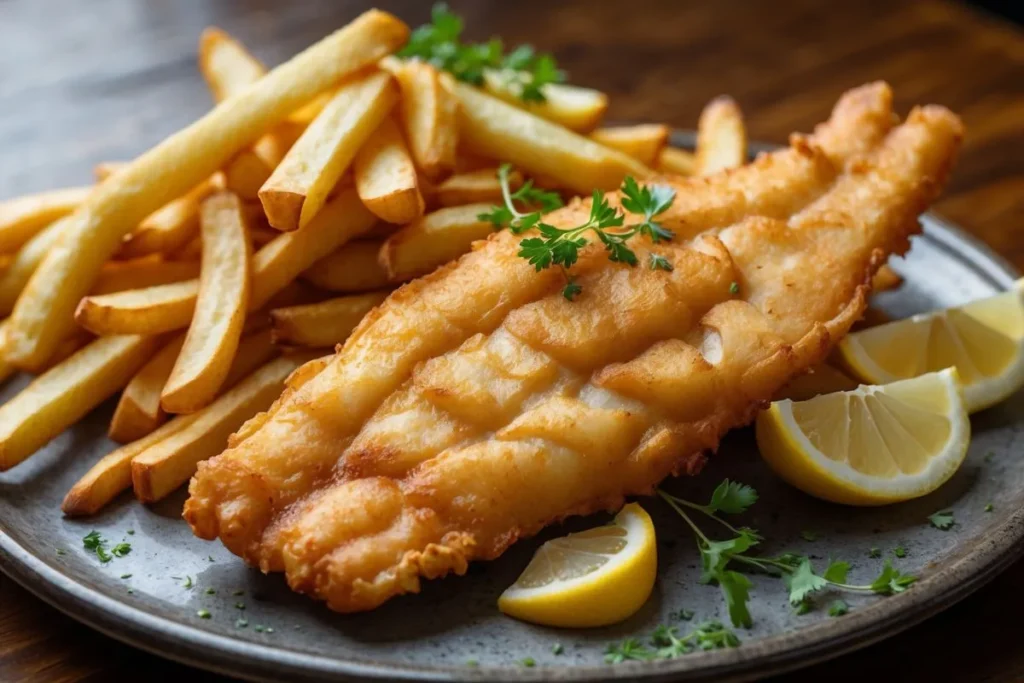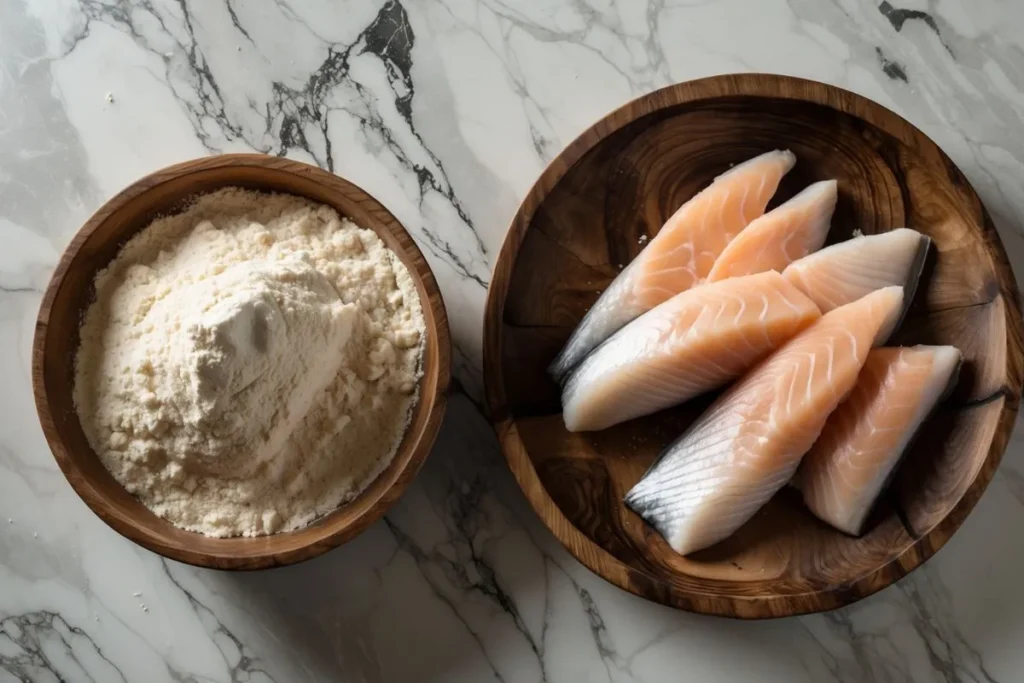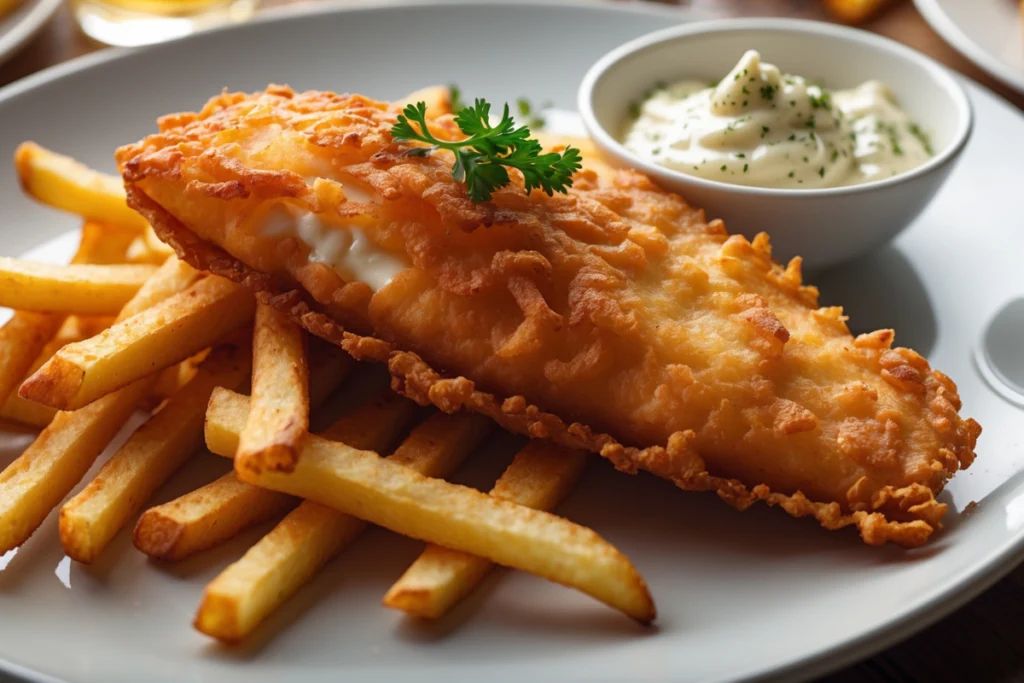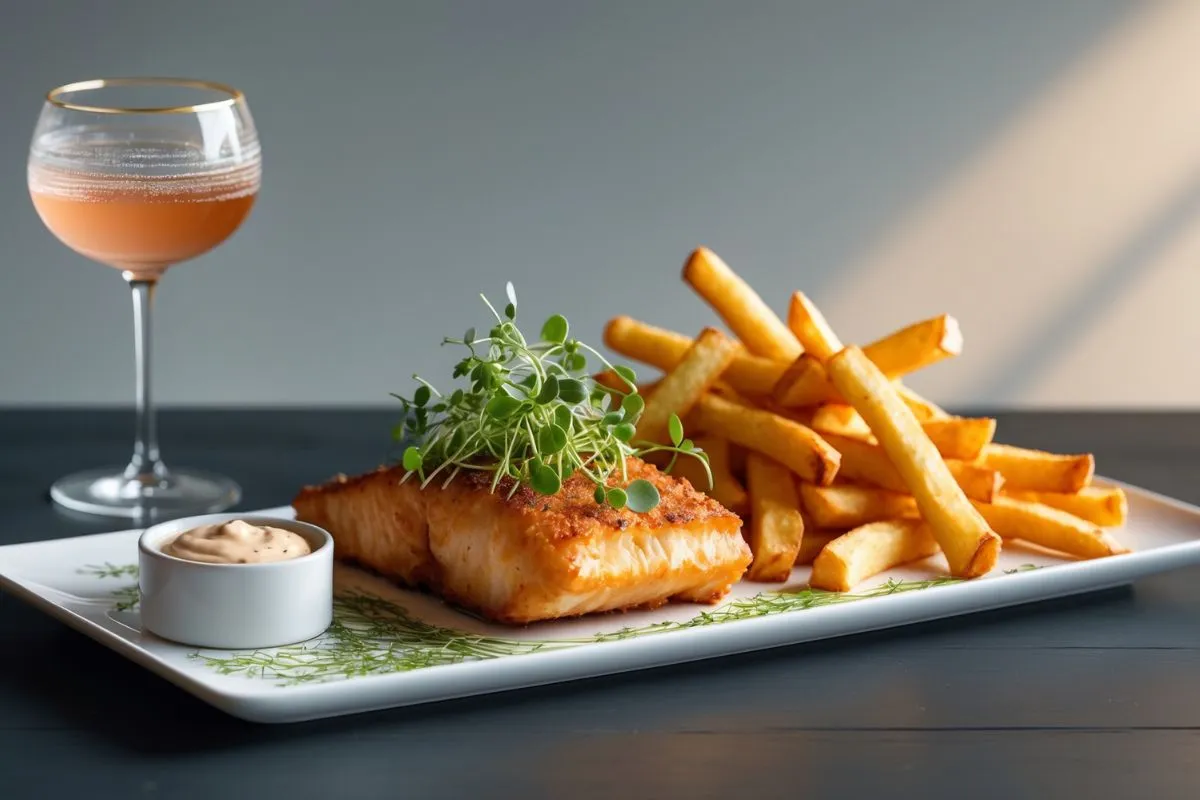Lectin free fish and chips recipe
Introduction: lectin free fish and chips recipe
Who doesn’t love a crispy, golden plate of fish and chips? Now, imagine enjoying this classic comfort food without the guilt — and without the lectins! If you’re ready to take your taste buds on a healthier adventure, you’re in the right place. Whether you’re looking to avoid lectins for health reasons or simply want a lighter, cleaner twist on a beloved dish, we’ve got you covered.
This isn’t just any fish and chips recipe — it’s the ultimate lectin-free version that’s not only delicious but packed with goodness. Stick around as we dive into the science behind lectins, the secret ingredients that make this dish a game-changer, and a step-by-step guide to help you create the crispiest fish and chips you’ve ever tasted. Believe us, this is a recipe you definitely don’t want to overlook!
Table of Contents

Understanding Lectins and Their Impact on Health
So, what exactly are lectins, and why are we so obsessed with avoiding them? Imagine that your body is like a well-oiled machine, and lectins are the little gremlins that throw wrenches into the gears. But don’t worry, we’re here to explain why they can be a bit of a troublemaker for your digestive system and overall health.
What are Lectins and Why Should They Be Avoided?
Lectins are a type of protein found in many foods, especially in legumes, grains, and some vegetables. While they play a protective role for plants (think of them as the plant’s natural defense system), they can cause issues when we eat them in large amounts. Here’s the scoop:
- They can interfere with digestion: Lectins can bind to the lining of your gut and potentially damage the digestive system, leading to bloating, gas, and discomfort.
- They may hinder nutrient absorption: Some lectins can block your body from absorbing key nutrients, like iron and zinc, leaving you feeling less nourished.
- They can trigger inflammation: For some people, lectins can promote inflammation, leading to chronic conditions like arthritis or autoimmune disorders.
Not exactly the party guests you want at your digestive banquet, right?
The Science Behind Lectins and Their Impact on Digestion and Overall Health
When you eat foods high in lectins, your body treats them like a foreign invader, which can lead to a variety of issues:
- Gut irritation: Lectins have a knack for sticking to the mucosal lining of your intestines, causing irritation and sometimes even damage.
- Reduced gut motility: This can slow down digestion, making your stomach feel sluggish, bloated, and uncomfortable.
- Possible leaky gut: If lectins damage the gut lining, they can create tiny holes, allowing undigested food particles and toxins to leak into the bloodstream — a condition often referred to as leaky gut.
So, while lectins might not be the worst thing in the world, cutting back on them can help your body feel lighter, less bloated, and more energetic.
But don’t panic! You don’t have to give up your favorite dishes to stay lectin-free. Just like we’re about to show you with this fish and chips recipe — you can still enjoy a crispy, satisfying meal while keeping your gut happy and healthy.
Why Choose Fish and Chips as a Lectin-Free Dish?
Fish and chips — the ultimate comfort food, right? Crispy, golden, and oh-so-satisfying. But what if we told you that this classic dish could actually be made healthy without sacrificing any of that indulgent flavor? It’s true! You can enjoy fish and chips while avoiding those pesky lectins. Here’s how:
How Fish and Chips Can Be Adapted to Fit a Lectin-Free Diet
The beauty of fish and chips is in its simplicity. With just a few ingredient swaps, you can easily make this beloved dish lectin-free. Here’s how:
- The Fish: Most fish are naturally lectin-free! Whether you go for cod, haddock, or any other white fish, you’re already on the right track. Just make sure it’s fresh, wild-caught (if possible), and free from any added fillers.
- The Batter: Traditional fish batter uses flour, which is a no-go when you’re avoiding lectins. But no worries — just swap it out for cassava flour or arrowroot powder. These lectin-free alternatives give you the crispy, golden crunch without the digestive issues.
- The Chips: Potatoes are generally safe, but they do contain some lectins, so go for sweet potatoes or parsnips if you want an even cleaner option. Slice, season, and bake or fry them up for that perfect crispy texture.
The Health Benefits of Choosing Lectin-Free Ingredients for This Classic Dish
Going lectin-free in your fish and chips not only makes the dish gut-friendly but also brings a host of health benefits:
- Better Digestion: By eliminating lectins, you reduce the risk of digestive discomfort like bloating, gas, and inflammation. Your gut will thank you!
- Improved Nutrient Absorption: With fewer lectins blocking your system, your body can absorb vital nutrients like vitamins, minerals, and antioxidants more efficiently.
- Inflammation Reduction: Lectins are known to contribute to inflammation in the body. By choosing lectin-free ingredients, you’re helping keep your body in balance and promoting overall health.
Essential Ingredients for a Lectin-Free Fish and Chips Recipe

Ready to get cooking? Here’s the scoop on the essential ingredients you’ll need to make this lectin-free version of fish and chips. Each one plays a vital role in making the dish both delicious and gut-friendly. Let’s dive in!
Core Ingredients for a Lectin-Free Fish and Chips Recipe:
- White Fish (Cod, Haddock, or Pollock): These fish are naturally low in lectins, high in protein, and full of omega-3 fatty acids. Not only do they provide that flaky, tender texture you love, but they also pack a nutritious punch to support heart and brain health.
- Cassava Flour: This is your new best friend when it comes to creating that crispy, crunchy batter! Cassava flour is made from the root of the cassava plant and is 100% lectin-free. It adds a light texture that’s perfect for coating your fish without any of the unwanted lectins found in wheat flour.
- Arrowroot Powder: A great alternative to traditional flour, arrowroot helps give the batter that extra crispiness while keeping it light and easy on your digestive system. It also adds a subtle flavor that doesn’t overpower the dish.
- Sweet Potatoes (or Parsnips): For the chips, sweet potatoes are a fantastic lectin-free choice. They’re packed with vitamins A and C and add a natural sweetness that balances out the savory fish. Plus, they bake or fry beautifully into golden, crispy chips. If you’re in the mood for something a little different, parsnips make a great swap for a more earthy flavor.
- Coconut Oil or Avocado Oil: When it comes to frying, you need a healthy oil that can handle high heat. Coconut oil and avocado oil are both excellent choices because they have high smoke points and are rich in healthy fats that support digestion and overall health.
How Each Ingredient Contributes to the Recipe’s Healthiness and Flavor:
- White Fish: Lean, nutritious, and mild in flavor, the fish is the heart of the dish and provides a source of high-quality protein.
- Cassava Flour and Arrowroot Powder: These flours are both gluten-free and lectin-free, making them perfect for those with digestive sensitivities. They help create the crispy texture we all crave without the gut irritation.
- Sweet Potatoes and Parsnips: Packed with vitamins, fiber, and antioxidants, these root vegetables are the perfect alternative to regular potatoes. They offer a slightly sweet flavor that pairs beautifully with the savory fish.
- Coconut Oil or Avocado Oil: These healthy fats not only help with frying but also add a rich, smooth texture to the fish and chips, while also supporting your body’s absorption of fat-soluble vitamins.
Step-by-Step Guide: How to Make Lectin-Free Fish and Chips
Ready to get your hands dirty (in the best possible way)? Let’s walk through how to make the perfect lectin-free fish and chips. It’s easier than you think, and trust us — the results will make you wonder why you didn’t try this sooner.
Detailed Instructions for Preparing and Frying the Fish:
- Prep the Fish: Start with your fresh white fish (like cod or haddock). Pat it dry with paper towels to remove any excess moisture — this helps the batter stick better. Cut the fish into portions (about 4–6 inches long).
- Make the batter: In a mixing bowl, combine and whisk together:
- 1 cup cassava flour
- 2 tablespoons arrowroot powder
- 1/2 teaspoon salt (and optional spices like garlic powder or paprika for extra flavor)
- 1/2 cup sparkling water (or cold water) to create a light, bubbly batter.
- Stir until smooth — the batter should be thick enough to coat the fish but not overly heavy. If the batter is too thick, simply add a bit more water to thin it out.
- Heat the Oil: Pour coconut or avocado oil into a deep pan, enough to submerge the fish. Heat it to about 350°F (175°C). It’s ready when a small drop of batter sizzles as soon as it touches the oil.
- Coat the Fish: Dip each piece of fish into the batter, allowing any excess to drip off, then carefully lower the fish into the hot oil. Fry in batches to avoid overcrowding, which can make the fish soggy.
- Fry to perfection: Cook the fish for 4-5 minutes, flipping it halfway, until it’s golden and crispy. Use a slotted spoon to remove the fish and place it on a paper towel-lined plate to drain excess oil.
- Make the Chips: While the fish is frying, slice sweet potatoes or parsnips into thin strips. Toss them in a little olive oil, salt, and pepper, and bake at 425°F (220°C) for about 20 minutes or until crispy and golden, flipping halfway through.
Tips for Achieving a Crispy, Golden Batter:
- Make sure the oil is hot enough before adding the fish — too cold and the batter will soak up oil and become soggy.
- Don’t overcrowd the pan. Fry the fish in small batches to ensure even cooking and crispy results.
- If your batter seems too runny, add a little more cassava flour. If it’s too thick, thin it out with more sparkling water.
Notes for Perfecting Your Fish & Chips
- Troubleshooting Common Issues:
- Soggy Batter: This could be due to the oil being too cold or overcrowding the pan. Make sure the oil is at the right temperature and fry in small batches.
- Uneven Frying: If the fish isn’t cooking evenly, make sure it’s fully submerged in the oil and that you’re turning it halfway through. Also, ensure that the fish pieces are similar in size.
- Alternative Coating Options:
- If you’re feeling adventurous, try almond flour for a nuttier flavor or coconut flour for a slightly sweeter batter. Both options are lectin-free and can create a wonderful crispy coating.
Health Benefits of a Lectin-Free Diet

The Potential Benefits of a Lectin-Free Diet
Adopting a lectin-free diet might seem like a big change, but some individuals report potential health improvements. Here’s a closer look at the possible advantages:
- Support for Gut Health
For some individuals, lectins may irritate the lining of the intestines, potentially leading to bloating or digestive discomfort. Reducing lectins may help decrease gut inflammation and support smoother digestive function. - Potential Reduction in Inflammation
In people with sensitive immune systems, lectins may contribute to inflammation. A lectin-free diet might help lower inflammation, which could positively impact conditions like arthritis, skin health, or overall mood. - Improved Digestion
Without lectins interfering with nutrient absorption or causing gut distress, some people report experiencing less bloating and better energy levels.
While some individuals on a lectin-free diet report feeling lighter and more energetic, it’s important to note that not everyone is sensitive to lectins, and these compounds are naturally found in many nutrient-rich foods. Always consult a healthcare professional before making significant dietary changes.
Disclaimer:
“The health benefits described are based on anecdotal reports and general information. Individual results may vary. Please consult a healthcare professional for personalized advice before making significant dietary changes.”t? It’s not just about avoiding the bad stuff — it’s about putting more of the good stuff in your body!
Common Mistakes to Avoid When Making Lectin-Free Fish and Chips
Making lectin-free fish and chips is simple, but there are a few pitfalls you’ll want to avoid for a perfect dish every time:
- Using the Wrong Flour: If you use regular flour, you’re bringing lectins right back into the mix. Stick to cassava flour or arrowroot powder for a true lectin-free batter.
- Overcooking the Fish: Fish can dry out quickly, especially in hot oil. Make sure to monitor your fish closely to prevent it from being overcooked. Golden and crispy is the goal!
- Using Unhealthy Oils: Avoid oils like vegetable or canola oil that can lead to inflammation. Stick to coconut oil or avocado oil for a healthy fry that supports your body’s needs.
To make sure your fish and chips are crispy, golden, and free of any digestive issues, follow the guidelines carefully and avoid these common missteps.
Alternative Toppings and Dips for Lectin-Free Fish and Chips
No fish and chips meal is complete without the perfect dipping sauce, right? Here are some lectin-free options that will take your dish to the next level:
- Lectin-Free Tartar Sauce: Made with mayonnaise, lemon juice, and pickles — all lectin-free. It’s creamy, tangy, and the perfect partner for your crispy fish.
- Creamy Avocado Dip: For a refreshing and creamy option, mix mashed avocado with a squeeze of lime juice and a pinch of salt. It’s light, healthy, and adds a fresh twist.
- Fresh Herb-Infused Mayonnaise: Combine mayo with fresh herbs like parsley, dill, or chives for an herby, flavorful dip.
These dips not only complement the flavors of the fish and chips, but they also add extra nutrients, making the dish even healthier!
How to Make This Recipe More Kid-Friendly

Kids can be picky eaters, but with a few tweaks, you can make this lectin-free fish and chips recipe fun and delicious for even the fussiest eaters:
- Mild Seasonings: Keep the seasoning light and kid-friendly. Think a pinch of salt, a sprinkle of garlic powder, or a dash of paprika — no need to go heavy on spices.
- Fun Fish Shapes: Cut the fish into fun, bite-sized shapes — fish sticks or fish fillets shaped like stars can make the meal more exciting for younger kids.
- Sneak in Veggies: You can blend some finely grated carrots or zucchini into the batter to add extra nutrients without changing the flavor. Another option? Pair the fish with a side of sweet potato fries for a veggie-packed twist.
Kids won’t even know they’re eating something healthy, and you’ll feel good knowing they’re getting essential nutrients!
How to Store and Reheat Leftovers
Leftovers? No problem! Here’s how to store and reheat your lectin-free fish and chips while keeping them crispy and delicious:
- Storing: Store your leftover fish and chips in an airtight container in the fridge. The fish can last for 1–2 days, and the chips for up to 3 days.
- Reheating: For the crispiest results, reheat the fish and chips in a hot oven or air fryer. Set the oven to 375°F (190°C) and bake for about 10 minutes, or pop them into the air fryer for 5–6 minutes. This technique keeps them crispy and prevents them from becoming soggy.
FAQs
What type of fish does Gordon Ramsay use for fish and chips?
Gordon Ramsay typically recommends cod or haddock for fish and chips. These white fish are mild, flaky, and perfect for frying, offering a tender texture that pairs well with the crispy batter.
What ingredients are used to make the batter for fish and chips?
Traditional fish and chips batter is usually made from flour, water, salt, and sometimes beer or baking powder to create a light and crispy coating. In the case of a lectin-free version, cassava flour or arrowroot powder can be used instead.
What can you use instead of beer in fish and chips?
If you’re looking for a beer substitute, sparkling water or club soda is an excellent option. The carbonation helps create a light, crispy batter without any alcohol or lectins.
What’s the best type of fish for fish and chips?
The best fish for fish and chips is usually cod or haddock due to their mild flavor and firm texture. These fish fry up perfectly, holding their shape and offering a tender inside with a crispy exterior.
What’s the best oil for frying fish and chips?
The best oils for frying fish and chips are avocado oil or coconut oil due to their high smoke points and healthy fats. These oils ensure a crispy, golden fry without compromising on flavor or health benefits.
What makes the best fish and chips?
The best fish and chips come from fresh, high-quality fish, a crispy, light batter, and properly heated oil. The perfect balance of texture, flavor, and crispiness, along with the right seasoning, makes all the difference.
Conclusion
And there you have it — the ultimate guide to making delicious, lectin-free fish and chips that are not only healthier but equally as satisfying as the traditional version. By choosing the right ingredients, avoiding common mistakes, and pairing your crispy fish with flavorful, healthy dips, you’re on your way to enjoying this classic dish in a whole new way. Whether you’re cooking for yourself or the whole family, this recipe proves that eating healthy doesn’t mean sacrificing taste. So, go ahead, dive into your lectin-free fish and chips, and savor the crispy, golden goodness — your gut (and taste buds) will thank you!

